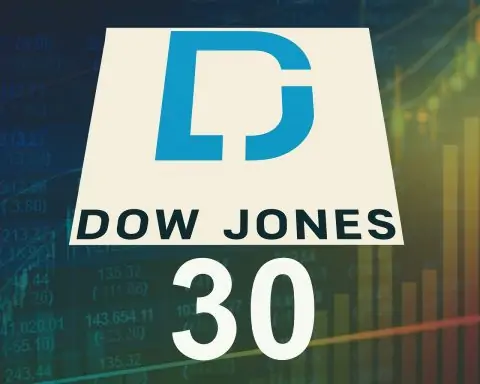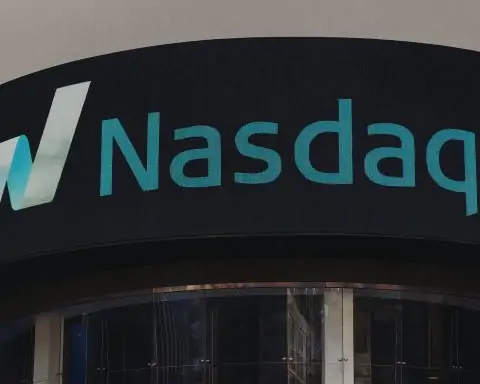- Gates’s “Strategic Pivot”: Microsoft co-founder Bill Gates says it’s time to shift climate focus from strict emission cuts to reducing poverty and disease [1] [2]. In a new 17-page memo ahead of COP30, Gates argues innovation will curb climate change, so rich-world climate funds should instead target human suffering [3] [4].
- Controversial Quote: Asked to choose between cutting emissions or saving lives, Gates said he’d take “a tenth of a degree” more warming to eliminate malaria [5]. He said people “don’t understand the suffering that exists today,” implying saving lives outweighs very small temperature changes [6].
- Expert Backlash: Climate scientists immediately pushed back. UN expert Jeffrey Sachs slammed Gates’s memo as “pointless, vague, unhelpful and confusing” [7]. Other researchers agreed more attention is needed on health and development, but warned we can’t ignore rising greenhouse gases [8] [9]. Stanford’s Chris Field and Princeton’s Michael Oppenheimer urged pursuing both emission cuts and human welfare simultaneously [10] [11].
- UN Warns of Overshoot: UN Secretary-General António Guterres warns humanity already blew the 1.5°C target. In a Guardian interview, Guterres called overshooting “inevitable” and urged leaders to “change course” rapidly to shorten and limit the overshoot, or risk Amazon tipping points and other catastrophes [12]. New UN analysis shows current climate pledges would cut emissions ~10% by 2035 — far short of the ~60% needed to stay under 1.5°C [13].
- COP30 Context: The climate summit (COP30) in Belém, Brazil (Nov 10–21) will debate adaptation vs. mitigation. Brazil is preparing with bold science: researchers in the Amazon are running a “climate time machine” experiment, pumping extra CO₂ into forest plots to simulate future atmospheres and see how the Amazon adapts [14].
- US Policy Impact: In the US, the outlook is mixed. President Trump’s new climate laws have slashed clean-energy tax credits, spurring a scramble by states like Oregon to save solar and wind projects (and worrying clean-energy investors) [15]. Even so, major clean-energy stocks show resilience: NextEra Energy (NEE), a renewables giant, is trading near $80–85 as of Oct. 2025 [16] [17], and electric-vehicle leader Tesla (TSLA) recently rallied to ~$440 after a Q3 sales boom [18].
- Tech & Finance Angle: Climate tech investment is booming. Gates’s Breakthrough Energy Ventures backs fusion startup Type One Energy, whose TVA-backed fusion project in Tennessee could power 300,000 homes if successful [19]. Tech giants are also betting on clean power – Microsoft signed the first-ever fusion power purchase deal and even OpenAI is eyeing fusion to run future AI datacenters [20]. On Wall Street, a “green energy gold rush” is underway, with analysts touting renewable stocks from hydrogen firms to solar panel makers [21] [22].
In-depth, Bill Gates’s memo argues that climate funds and innovation should save lives first. He noted his Gates Foundation’s billions spent on health (HIV, malaria, etc.) and said a small temperature rise is worth eliminating massive human suffering [23] [24]. Gates insists even though every fraction of a degree matters, we must consider pragmatic trade-offs: “If you have something that gets rid of 10,000 tons of emissions, that you’re spending several million dollars on… that just doesn’t make the cut,” he wrote [25].
Climate experts disagree. Kristie Ebi (Univ. of Washington) agrees aid should boost health, but cautions Gates assumes other climate action just happens on schedule [26]. Princeton’s Michael Oppenheimer asks about ecosystems: “Climate change is already wreaking havoc… Can we truly live in a technological bubble?” [27]. Columbia’s Jeffrey Sachs bluntly called the trade-off framing false: poverty reduction and climate action aren’t mutually exclusive if fossil fuels are reined in [28]. Stanford’s Chris Field says we need both near-term adaptation and long-term decarbonization [29].
Global leaders at COP30 face tough politics. The UN’s climate body reports that if all announced plans were implemented, global emissions would begin to fall around 2026 (a 10% drop by 2035) – the first projected decline since 1990 [30]. Yet that rate is well below what’s needed. Simon Stiell of the UNFCCC said, “Humanity is now clearly bending the emissions curve downwards… although still not nearly fast enough” [31]. With the Paris 1.5°C goal essentially out of reach, experts stress cutting emissions drastically remains critical to avoid catastrophic “tipping points” in the Amazon, Arctic and oceans [32] [33].
Behind these policy battles, climate risk is already mounting. A recent study found that the first half of 2025 saw the costliest climate disasters on record in the U.S.: 14 separate events (mostly wildfires and storms) caused over $100 billion in damages [34]. Los Angeles wildfires alone inflicted ~$61 billion in losses and hundreds of deaths [35]. Climate Central’s Adam Smith warns that as the planet warms, “we are certainly seeing more of these big, costly events… climate change is supercharging the intensity and frequency” [36].
Market response has been telling. In the U.S., Trump’s clean-energy rollback sent shock waves through renewable investors. NextEra Energy (ticker NEE), often dubbed the “Exxon of green energy,” dipped on policy uncertainty but then rebounded strongly. It traded around $84 (near a one-year high) by late October, after surging ~18% in a month thanks to robust renewables growth and AI-driven power demand [37] [38]. Morgan Stanley forecasts that clean-energy infrastructure could double by 2030, despite short-term volatility [39] [40]. EV maker Tesla (TSLA), after a profit-miss scare, is up over 30% this quarter to about $440 [41] [42] (fueled by record deliveries ahead of expiring tax credits).
Analysts’ take: The Gates memo has ignited debate on priorities. Some investors see it as a call for pragmatic tech innovation (consistent with Gates’s long-term emphasis on clean tech), while critics say it underestimates the urgency of emissions cuts. As Reuters notes, Gates still believes “every tenth of a degree of warming matters” and advocates aggressive clean-energy R&D [43] [44]. The coming COP30 will test whether world leaders agree with Gates’s balance of tech optimism and humanitarian focus, or double down on rapid decarbonization.
Outlook: In the near term, expect COP30 to highlight both adaptation (health, agriculture, resilience) and finance for developing countries, alongside calls for tougher emission cuts. Investors foresee a mixed climate-tech boom: exciting innovations (fusion, carbon removal, green hydrogen) may yield big gains, but policy whiplash could shake markets. One thing is clear – whether through vaccines or solar panels, Bill Gates and others agree that improving human lives and a stable climate ultimately go hand-in-hand. The question is how to allocate limited resources between those goals. As Gates himself put it, the bar for climate aid projects must be “very high” to justify their cost [45], sparking a pragmatic but contentious debate on the world stage.
Sources: News reports from the Associated Press, Reuters and other outlets [46] [47] [48]; Gates’s statements and memo; climate experts’ comments; plus analysis from climate and financial media (including TechStock²) [49] [50] [51].
References
1. abcnews.go.com, 2. abcnews.go.com, 3. abcnews.go.com, 4. www.washingtonpost.com, 5. abcnews.go.com, 6. abcnews.go.com, 7. www.washingtonpost.com, 8. www.washingtonpost.com, 9. www.washingtonpost.com, 10. www.washingtonpost.com, 11. www.washingtonpost.com, 12. www.theguardian.com, 13. www.reuters.com, 14. www.reuters.com, 15. ts2.tech, 16. ts2.tech, 17. ts2.tech, 18. ts2.tech, 19. ts2.tech, 20. ts2.tech, 21. ts2.tech, 22. ts2.tech, 23. abcnews.go.com, 24. abcnews.go.com, 25. abcnews.go.com, 26. abcnews.go.com, 27. www.washingtonpost.com, 28. www.washingtonpost.com, 29. www.washingtonpost.com, 30. www.reuters.com, 31. www.reuters.com, 32. www.theguardian.com, 33. www.reuters.com, 34. www.theguardian.com, 35. www.theguardian.com, 36. www.theguardian.com, 37. ts2.tech, 38. ts2.tech, 39. ts2.tech, 40. ts2.tech, 41. ts2.tech, 42. www.reuters.com, 43. www.washingtonpost.com, 44. www.washingtonpost.com, 45. abcnews.go.com, 46. abcnews.go.com, 47. www.reuters.com, 48. www.theguardian.com, 49. ts2.tech, 50. ts2.tech, 51. ts2.tech










